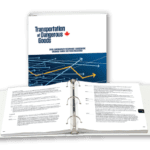
Transport Canada’s Competency-Based Training Amendment Delayed
Canada’s Transportation of Dangerous Goods Regulations (TDGR) covers, among other topics, the requirements for employers to train employees in all parts of the regulations that affect their jobs. However, the current regulations only require “adequate” training, with “adequate” being defined by the employer.
Therefore, on December 11, 2021, Transport Canada published a proposed update to Part 6 in the Canada Gazette, Part I. The proposed changes would have implemented a new philosophy for the standard training, called Competency-Based Training. A new standard CAN/CGSB-192.3-2020, Transportation of dangerous goods training, assessment and competency, would be incorporated by reference. Canadian handlers, offerors for transport, transporters and importers would have used this as the base for creating job-specific as well as general training programs and evaluating their effectiveness.
Troubles Arise for the New Training Standard
Normally, when a proposed amendment is published in Canada Gazette I, there is a brief comment period, after which revisions (if necessary) are made, and the final version is published as an official change in Canada Gazette II. However, there was nothing further issued by Transport Canada after the Gazette I. It appears that the initial comments were not favorable.
There were a number of issues with the CGSB standard. Although the checklists were a helpful resource for trainers, listing the training required for each type of job, the methodology was cumbersome. For example, training was broken into two sections – a short “general awareness” course that would have to be completed with an evaluation of at least 80% before moving on to job specific. Also, the marine mode seemed to have been mostly ignored. Mostly, though, it appears, stakeholders crunched the financial numbers themselves and found the costs of the new methodology excessive.
Transport Canada, therefore, has announced as of November 8, 2024, that they’re reconsidering their approach to the whole training amendment. They plan to write a “white paper,” a review of the situation, hoping for a feasible step forward. Considering that there are a number of critical updates necessary for the TDGR currently, it may be that proceeding with the new standard will be given a lower priority.
Conclusion
Trainers in Canada, both corporate and third-party, have put a lot of energy into the concept of competency-based training. It appears, though, that we’ll likely be dealing with the current situation from Part 6 for several years more, at least.
Do you have any questions about the requirements for training in Canada or the United States? Contact our team of Regulatory Experts today!
Stay up to date and sign up for our newsletter!
We have all the products, services and training you need to ensure your staff is properly trained and informed.
 TDG Regulations TDG Regulations |
 Shipping Dangerous Shipping DangerousGoods by Ground |
 TDG Posters & Charts TDG Posters & Charts |
References:
Canada Gazette, Part I, Volume 155, No. 50
CAN/CGSB-192.3-2020, Transportation of dangerous goods training, assessment and competency
Miller, Bridget, HR Daily Advisor, What is Competency-Based Training?





